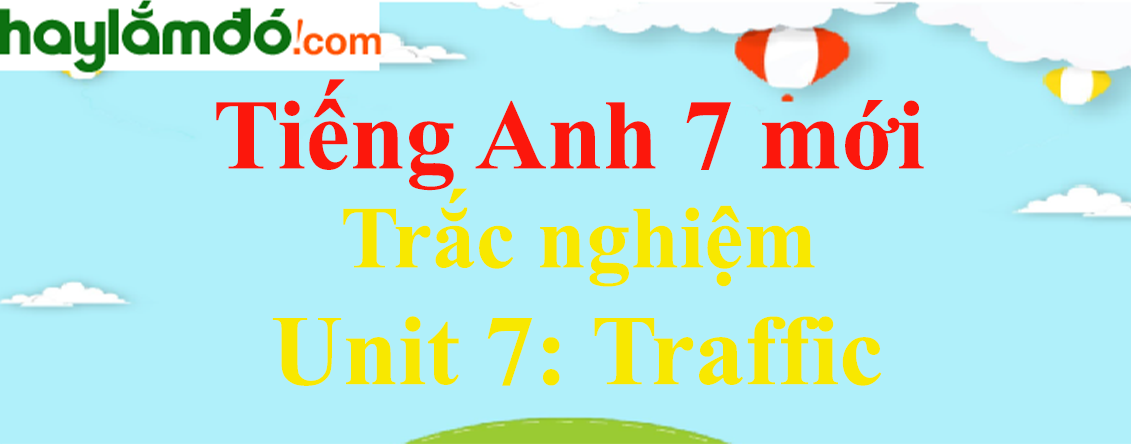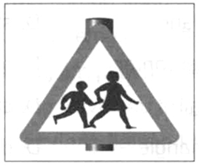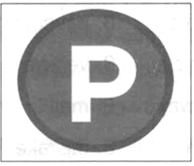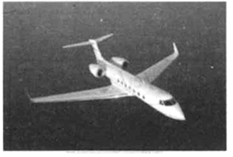Trắc nghiệm Tiếng Anh 7 mới Unit 7 (có đáp án): Traffic
Trắc nghiệm Tiếng Anh 7 mới Unit 7 (có đáp án): Traffic
Haylamdo biên soạn bài tập trắc nghiệm Tiếng Anh lớp 7 chương trình mới gồm đầy đủ các kĩ năng: Phonetics and Speaking, Vocabulary and Grammar, Reading, Writing có đáp án và giải thích chi tiết giúp học sinh ôn luyện trắc nghiệm từ đó học tập tốt hơn môn Tiếng Anh 7.

A. Phonetics and Speaking
Chọn từ có phần gạch chân được phát âm khác.
Question 1: A. wet B. met C. head D. hand
Đáp án: D
Giải thích: Đáp án A, B, C phát âm là /e/. Đáp án D phát âm là /æ/
Question 2: A. girl B. burn C. turn D. fill
Đáp án: D
Giải thích: Đáp án A, B, C phát âm là /ɜː/. Đáp án D phát âm là /i/
Question 3: A. left B. debt C. fan D. dead
Đáp án: C
Giải thích: Đáp án A, B, D phát âm là /e/. Đáp án C phát âm là /æ/
Question 4: A. train B. tale C. mine D. rain
Đáp án: C
Giải thích: Đáp án A, B, D phát âm là /ei/. Đáp án C phát âm là /ai/
Question 5: A. die B. bicycle C. high D. min
Đáp án: D
Giải thích: Đáp án A, B, C phát âm là /ai/. Đáp án D phát âm là /i/
Question 6: A. meet B. feed C. speed D. fit
Đáp án: D
Giải thích: Đáp án A, B, C phát âm là /i:/. Đáp án D phát âm là /i/
Question 7: A. limit B. lipid C. treat D. hit
Đáp án: C
Giải thích: Đáp án A, B, D phát âm là /i/. Đáp án C phát âm là /i:/
Question 8: A. curve B. term C. gear D. herm
Đáp án: C
Giải thích: Đáp án A, B, D phát âm là /ɜː/. Đáp án C phát âm là /ɪə/
Question 9: A. truck B. drunk C. mug D. dark
Đáp án: D
Giải thích: Đáp án A, B, C phát âm là /ʌ/. Đáp án D phát âm là /ɑː/
Question 10: A. sign B. light C. bye D. tin
Đáp án: D
Giải thích: Đáp án A, B, C phát âm là /ai/. Đáp án D phát âm là /i/
Question 11: A. traffic B. pavement C. plane D. station
Đáp án: A
Giải thích: Đáp án B, C, D phát âm là /ei/. Đáp án A phát âm là /æ/
Question 12: A. recycle B. vehicle C. helicopter D. reverse
Đáp án: C
Giải thích: Đáp án A, B, D phát âm là /i/. Đáp án C phát âm là /e/
Question 13: A. railway B. mail C. sail D. captain
Đáp án: D
Giải thích: Đáp án A, B, C phát âm là /ei/. Đáp án D phát âm là /i/
Question 14: A. sign B. mistake C. triangle D. drive
Đáp án: B
Giải thích: Đáp án A, C, D phát âm là /ai/. Đáp án B phát âm là /i/
Question 15: A. nearest B. head C. bread D. health
Đáp án: A
Giải thích: Đáp án B, C, D phát âm là /e/. Đáp án A phát âm là /ɪə/
B. Vocabulary and Grammar
Bài 1: Find the odd one out A, B, C or D.
Question 1: A. riding B. driving C. gardening D. flying
Đáp án: C
Giải thích: A, B, D đều liên quan tới giao thông.
Dịch nghĩa: A. đạp xe B. lái xe C. làm vườn D. bay
Question 2: A. no cycling B. no parking C. no right turn D. sign
Đáp án: D
Giải thích: A, B, C đều là nội dung biển báo. D là dạng chung chung nên khác 3 đáp án còn lại.
Dịch nghĩa: A. không đạp xe B. không đỗ xe C. không rẽ phải D. biển báo
Question 3: A. train B. plane C. car D. sail
Đáp án: D
Dịch nghĩa: A. tàu B. máy bay C. ô tô D. cánh buồm
Question 4: A. by car B. on foot C. by bus D. by bicycle
Đáp án: B
Dịch nghĩa: A. bằng ô tô B. đi bộ C. bằng xe buýt D. bằng xe đạp
Question 5: A. rule B. ride C. reverse D. drive
Đáp án: A
Giải thích: B, C, D đều là động từ.
Dịch nghĩa: A. luật lệ B. đạp xe C. đảo ngược D. lái xe
Bài 2: Circle A, B, C or D for each picture
Question 1:

A. no marking
B. no right turn
C. no cycling
D. children crossing
Đáp án: D
Giải thích: Khu vực trẻ em qua đường
Question 2:

A. hospital ahead
B. parking
C. cycle lane
D. traffic lights
Đáp án: B
Giải thích: Khu vực đỗ xe
Question 3:

A. fly a plane
B. ride a bike
C. drive a car
D. sail a boat
Đáp án: A
Giải thích: Đi máy bay
Question 4:

A. go to school by bus
B. go to school by bicycle
C. go to school on foot
D. go to school by car
Đáp án: B
Giải thích: Đi học bằng xe đạp
Bài 3: Choose the correct option for each gap in the sentences
Question 1: Minh used to _____ his homework late in the evening.
A. does B. do
C. doing D. did
Đáp án: B
Giải thích: Used to + V (đã từng làm gì trong qua khứ như 1 thói quen)
Dịch nghĩa: Minh đã từng quen làm bài tập muộn và buổi tối.
Question 2: If people _________ the rules, there are no more accidents.
A. follow B. take care of
C. obey D. remember
Đáp án: C
Dịch nghĩa: Nếu mọi người tuân theo luật, sẽ không có tai nạn nữa.
Question 3: You should _________ right and left when you go across the roads.
A. see B. look
C. be D. take
Đáp án: A
Dịch nghĩa: Bạn nên nhìn phải và trái khi sang đường.
Question 4: Hurry up or we can't _________ the last bus home.
A. keep B. follow
C. go D. catch
Đáp án: D
Dịch nghĩa: Nhanh lên hoặc chúng ta không thể bắt chuyến buýt cuối cùng về nhà.
Question 5: Lan used to go to school _________.
A. with bicycle B. by foot
C. in car D. by bus
Đáp án: D
Dịch nghĩa: Lan từng quen đi học bằng xe buýt.
Question 6: Public _________ in my town is good and cheap.
A. transport B. tour
C. journey D. travel
Đáp án: A
Giải thích: Cụm từ: public transport = phương tiện công cộng
Dịch nghĩa: Phương tiện công cộng ở thị trấn của tôi thì tốt và rẻ.
C. Reading
Bài 1: Decide if the following statements are True or False or Not Given according to the text.
TRAFFIC RULES
It's estimated that thousands of people lose their lives each year in Vietnam because of road traffic accidents. In order to decrease the number of traffic crashes, it's essential to know and obey traffic rules. Here are some of them.
For pedestrians
Walk on the right-hand side of the road if there is no pavement.
Cross the road at the zebra crossing or pedestrian bridge.
Look around and listen for traffic before crossing.
Don't run when crossing the road.
For cyclists
Ride in a bicycle lane or on the right-hand side of a single lane road.
Ride to the right of any oncoming vehicle.
Use a hand signal before you turn.
Don't ride in a row of two, three or more.
Don't lead an animal or hold on to a moving vehicle while riding a bicycle.
For motorists and drivers
Only drive when you are at least 18 years old and have a driving licence.
Ride or drive within the speed limit.
Do not park near or at any zebra crossing, on a footpath, or near a traffic light.
Give a signal before turning or changing lanes. Use your horn to alert others.
Keep a safe distance between you and other vehicles.
Slow down when you are near any intersections.
Question 1: Traffic accidents cause thousands of deaths in Vietnam every year.
A. True B. False C. Not Given
Đáp án: A
Thông tin: It's estimated that thousands of people lose their lives each year in Vietnam because of road traffic accidents.
Ước tính hàng ngàn người mất mạng mỗi năm tại Việt Nam vì tai nạn giao thông đường bộ.
Question 2: Pedestrians must walk on the left-hand side of the road.
A. True B. False C. Not Given
Đáp án: B
Thông tin: Walk on the right-hand side of the road if there is no pavement.
Đi bên phải đường nếu không có vỉa hè.
Question 3: Pedestrians are allowed to listen to music when crossing the road.
A. True B. False C. Not Given
Đáp án: C
Thông tin: Không có thông tin trong bài.
Question 4: Cyclists should use the horn before turning.
A. True B. False C. Not Given
Đáp án: B
Thông tin: For cyclists: Use a hand signal before you turn.
Đối với người đi xe đạp: Sử dụng tín hiệu tay trước khi bạn rẽ.
Question 5: Riding in a row of three isn't allowed.
A. True B. False C. Not Given
Đáp án: A
Thông tin: Don't ride in a row of two, three or more.
Đừng đi trong một hàng hai, ba hoặc nhiều hơn.
Question 6: You are allowed to drive if you are 17 years old.
A. True B. False C. Not Given
Đáp án: B
Thông tin: Only drive when you are at least 18 years old and have a driving licence.
Chỉ lái xe khi bạn ít nhất 18 tuổi và có bằng lái xe.
Question 7: You will be fined if you ride or drive faster than the speed limit.
A. True B. False C. Not Given
Đáp án: C
Thông tin: Thông tin không có trong bài.
Question 8: You shouldn't park on a footpath.
A. True B. False C. Not Given
Đáp án: A
Thông tin: Do not park near or at any zebra crossing, on a footpath, or near a traffic light.
Không đỗ xe gần hoặc tại bất kỳ giải phân cách nào, trên lối đi bộ hoặc gần đèn giao thông.
Question 9: You must keep a distance of 20 meters between you and other vehicles.
A. True B. False C. Not Given
Đáp án: C
Thông tin: Thông tin không có trong bài.
Question 10: It's necessary to reduce your speed when you are near any intersections.
A. True B. False C. Not Given
Đáp án: A
Thông tin: Slow down when you are near any intersections.
Hãy chậm lại khi bạn ở gần bất kỳ ngã tư nào.
Bài 2: Read the text and then choose the best answer A, B, C or D.
Yesterday, on the way home from school, I saw an accident. A boy was run over by a taxi when he was riding his bicycle. The boy's leg was broken and it was bleeding badly. Someone there tried to stop the bleeding. They put pressure on it and held it tight. A man used his mobile phone to call the emergency service. Some minutes later, an ambulance arrived and sent the boy to the hospital. Two policemen came to the scene immediately. Some people told the police that the taxi driver was driving at a very high speed when the accident happened. Some others began talking about the traffic accidents these days and blamed the increasing number of accidents on the roads for careless driving and drunk drivers.
Question 1: What did the writer see yesterday?
A. A fire B. An accident
C. A fighting. D. A crash.
Đáp án: B
Thông tin: Yesterday, on the way home from school, I saw an accident.
Hôm qua, trên đường từ trường về nhà, tôi thấy một tai nạn.
Question 2: The accident happened between a taxi and _________.
A. a bus B. a car
C. a bicycle D. motorbike
Đáp án: C
Thông tin: A boy was run over by a taxi when he was riding his bicycle.
Một cậu bé bị taxi chạy qua khi đang đạp xe đạp.
Question 3: The boy was sent to the hospital by _________.
A. a police B. a car
C. an ambulance D. a passenger
Đáp án: C
Thông tin: Some minutes later, an ambulance arrived and sent the boy to the hospital.
Vài phút sau, xe cứu thương đến và đưa cậu bé đến bệnh viện.
Question 4: What part of his body was hurt? – His _________.
A. arm B. leg
C. head D. shoulder
Đáp án: B
Thông tin: The boy's leg was broken and it was bleeding badly.
Chân của cậu bé bị gãy và chảy máu nặng.
Question 5: How was the driver driving when the accident happened? – Very ________.
A. slowly B. fast
C. carefully D. well
Đáp án: B
Thông tin: Some people told the police that the taxi driver was driving at a very high speed when the accident happened.
Một số người nói với cảnh sát rằng tài xế taxi đang lái xe với tốc độ rất cao khi vụ tai nạn xảy ra.
D. Writing
Bài 1: Choose the correct word A, B or C for each gap to complete the following passage.
When you are in Singapore, you can go about (1) _________ taxi, by bus, or by underground. I myself prefer the underground (2) _________ it is fast, easy and cheap. There are (3) _________ buses and taxis in Singapore and one cannot drive along the road (4) _________ and without many stops, especially on the Monday morning. The underground is therefore usually quicker (5) _________ taxis or buses. If you do not know Singapore very (6) _________, it is difficult (7) _________ the bus you want. You can (8) _________ a taxi, but it is (9) _________ expensive than the underground or a bus. On the underground, you find good maps that tell you the names of the stations and (10) _________ you how to get to them, so that it is easy to find you away.
Question 1: A. at B. in C. by
Đáp án: C
Dịch nghĩa: Khi bạn ở Singapore, bạn có thể đi lại bằng taxi, bằng xe buýt hoặc bằng tàu điện ngầm.
Question 2: A. bus B. because C. when
Đáp án: B
Dịch nghĩa: Bản thân tôi thích tàu ngầm bởi vì nó nhanh, dễ dàng và rẻ.
Question 3: A. many B. a lot C. few
Đáp án: A
Dịch nghĩa: Có rất nhiều xe buýt và taxi ở Singapore.
Question 4: A. quick B. quickly C. quicker
Đáp án: B
Dịch nghĩa: Người ta không thể lái xe dọc theo con đường nhanh chóng và không có nhiều điểm dừng, đặc biệt là vào sáng thứ Hai
Question 5: A. so B. like C. than
Đáp án: C
Dịch nghĩa: Do đó, tàu điện ngầm thường nhanh hơn taxi hoặc xe buýt.
Question 6: A. well B. good C. fine
Đáp án: A
Dịch nghĩa: Nếu bạn không biết Singapore lắm ….
Question 7: A. to find B. find C. finding
Đáp án: A
Dịch nghĩa: …. thật khó khăn để tìm thấy xe buýt bạn muốn.
Question 8: A. go B. take C. get
Đáp án: C
Dịch nghĩa: Bạn có thể bắt một chiếc taxi ….
Question 9: A. less B. more C. most
Đáp án: B
Dịch nghĩa: …. nhưng nó đắt hơn so với tàu điện ngầm hoặc xe buýt.
Question 10: A. give B. talk C. show
Đáp án: C
Dịch nghĩa: Ở dưới lòng đất, bạn tìm thấy những bản đồ tốt cho bạn biết tên của các trạm và chỉ cho bạn cách đến đó, để bạn dễ dàng tìm thấy bạn.
Bài 2: Choose the best answer.
Question 1: I_____ in Jakarta. I've lived here all my life.
A. am used to living
B. used to living
C. use to live
D. am used to live
Đáp án: A
Dịch nghĩa: Tôi quen sống ở Jakarta. Tôi đã sống ở đây cả đời rồi.
Question 2: Jane_____ for the telephone company, but now she has a job at the post office.
A. used to working
B. used to work
C. is used to working
D. am used to work
Đáp án: B
Dịch nghĩa: Jane đã từng làm việc cho 1 công ty điện thoại, nhưng bây giờ cô ấy có 1 công việc ở bưu điện.
Question 3: This work doesn’t bother me. I _____ hard. I've worked hard all my life.
A. used to working
B. used to work
C. am used to working
D. am used to work
Đáp án: C
Dịch nghĩa: Công việc này không làm phiền tôi đâu. Tôi quen với việc làm việc chăm chỉ. Tôi đã làm việc chăm chỉ cả đời rồi.
Question 4: Dick_____ a moustache, but he doesn't any more. He shaved it off because his wife didn't like it.
A. used to having
B. is used to having
C. was used to having
D. used to have
Đáp án: D
Dịch nghĩa: Dick đã từng có ria mép, nhưng anh không còn nữa. Anh cạo nó đi vì vợ anh không thích nó.
Question 15: When I was a child, I _____ anyone 40 was old.
A. used to think
B. was used to thinking
C. used to thinking
D. was used to think
Đáp án: A
Dịch nghĩa: Khi tôi còn là một đứa trẻ, tôi nghĩ bất cứ ai 40 tuổi đều già

